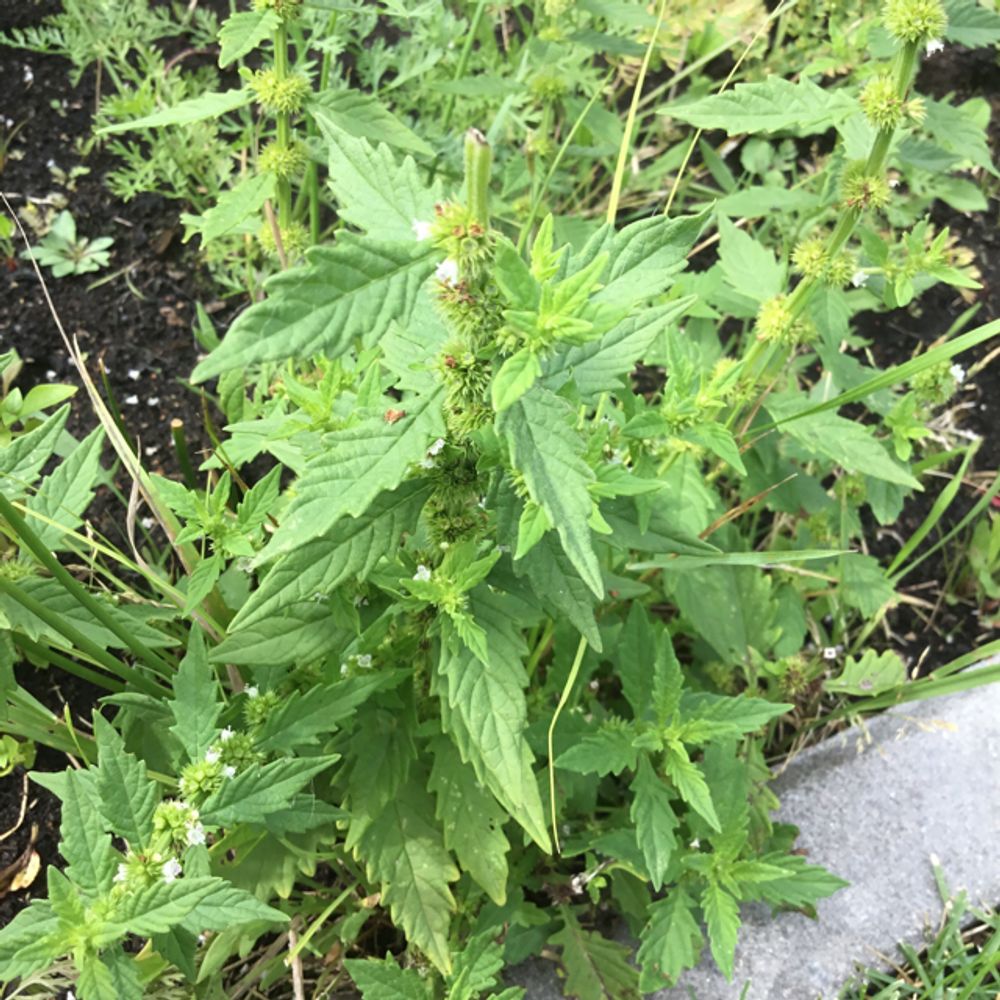Gypsywort
(Lycopus europaeus)

Description
Lycopus europaeus, common names gypsywort, gipsywort, bugleweed, European bugleweed and water horehound, is a perennial plant in the genus Lycopus, native to Europe and Asia, and naturalized elsewhere. Another species, Lycopus americanus has also been erroneously called L. europaeus. Gipsywort is a rather straggly perennial plant with slender underground runners and grows to a height of about 20 to 80 cm (8 to 31 in). The stalkless or short-stalked leaves are in opposite pairs. The leaf blades are hairy, narrowly lanceolate-ovate, sometimes pinnately-lobed, and with large teeth on the margin. The inflorescence forms a terminal spike and is composed of dense whorls of white or pale pink flowers. The calyx has five lobes and the corolla forms a two-lipped flower about 4 mm (0.16 in) long with a fused tube. The upper lip of each flower is slightly convex with a notched tip and the lower lip is three-lobed, the central lobe being the largest and bearing a red "nectar mark" to attract pollinating insects. There are two stamens, the gynoecium has two fused carpels and the fruit is a four-chambered schizocarp.[4] The flowers are visited by many types of insects, and can be characterized by a generalized pollination syndrome
Taxonomic tree:







